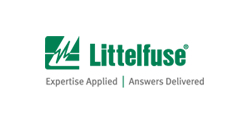Handling and Mounting Littelfuse miniBLOC - SOT227B
●This application note discusses mounting and handling for Littelfuse power semiconductors in SOT227B package, the miniBLOC, as depicted in Figure 1. Information is provided focusing on special precautions to be considered during mounting.
■Introduction:
●The miniBLOC is the intermediate link between discrete power devices like the TO-263 and power semiconductor modules like Littelfuse Y-series. Though it features a DCB-substrate to carry the dies, the molded housing structure characterizes it to be a discrete component rather than a power module. The internal DCB substrate inherently offers electrical insulation, allowing for mounting of several miniBLOCs to the same heat sink without additional means of isolation. The base plate in turn acts as large-area interface between the semiconductor and a heat sink.
●The package provides features beneficial for power electronic applications. These include:
◆High electric insulation strength
◆High thermal performance
◆Current ratings to support applications up to hundreds of kilowatts
◆Internal construction is designed to reduce stray inductance and parasitic capacitances, leading to improved EMI-performance
●With the four terminals, the miniBLOC is available in a variety of technologies including IGBT, thyristor , Si- and SiC- diode and MOSFET in voltage classes from 40 to 2500 V and current ratings up to 600A.
●There are a few miniBLOCs, such as the DSEC 240-04A and the DSEC 240-06A, that feature a non-isolated construction and an electrically active base plate. These are diode devices, designed for special purposes. Despite the slightly different internal construction, the recommendations made in this application note are valid for these types as well.
■Conclusion:
●Littelfuse miniBLOC devices with their base plate and molded housing structure are mechanically robust components. Still, care needs to be taken to not bend the module during the mounting process and a mechanical arrangement must be designed to prevent pulling forces at the terminals. Applying thermal interface material by a well-controlled screen-printing process further helps to reduce unwanted mechanical stress to the device.
●If these aspects are considered, mounting the devices can successfully be done by implementing established procedures and processes.
|
[ Industrial motor drives ][ PV inverters ][ UPS systems ][ DC-DC converters ][ Commercial vehicles ] |
|
|
Application note & Design Guide |
|
|
|
|
Please see the document for details |
|
|
|
|
|
|
|
|
SOT227B;TO-263 |
|
|
English Chinese Chinese and English Japanese |
|
|
August 2022 |
|
|
Rev 22.08a |
|
|
|
|
|
590 KB |
- +1 Like
- Add to Favorites
Recommend
All reproduced articles on this site are for the purpose of conveying more information and clearly indicate the source. If media or individuals who do not want to be reproduced can contact us, which will be deleted.






















































































































































































































































































































































































































































































































































































































































































































































































































































































































